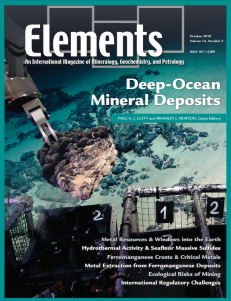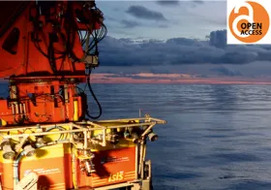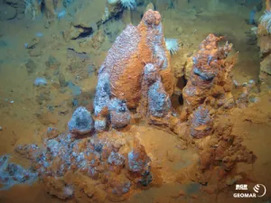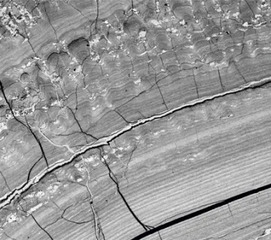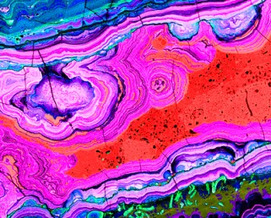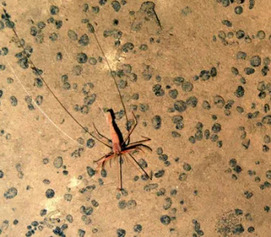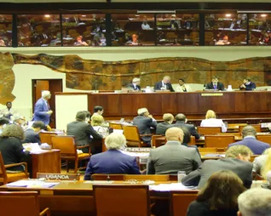Deep-Ocean Mineral Deposits
Paul A. J. Lusty and Bramley J. Murton – Guest Editors
Table of Contents
Ferromanganese nodules/crusts and seafloor massive sulfides are a unique feature of the deep-ocean seafloor. These deep-ocean mineral deposits are windows into Earth’s processes, revealing clues to the evolution of seawater and ancient ore-forming processes. They also represent significant metal resources that could contribute future raw materials supply. The articles in this issue explore the formation of deep-ocean mineral deposits; their inherent scientific value; and the geological, technical, environmental and economic challenges, as well as regulatory and philosophical questions, of extracting such mineral resources.
- Deep-Ocean Mineral Deposits: Metal Resources and Windows into Earth Processes
- Modern Seafloor Hydrothermal Systems: New Perspectives on Ancient Ore-Forming Processes
- Formation and Occurrence of Ferromanganese Crusts: Earth’s Storehouse for Critical Metals
- Metal Extraction from Deep-Ocean Mineral Deposits
- Mining Deep-Ocean Mineral Deposits: What are the Ecological Risks?
- Deep-Sea Mining: International Regulatory Challenges and Responses
Analab
Cambridge University Press
CAMECA
CrystalMaker Software Inc.
Excalibur Mineral Corporation
Geochemists Workbench
International Centre for Diffraction Data
IsotopX
Materials Research Society
ODLAB
ProtoXRD
Savillex
The Geological Society of London
Volume 14, Number 6 (December) • Marine Biogeochemistry of Trace Elements and Their Isotopes
GUEST EDITORS: Catherine Jeandel (CNRS, France), Zanna Chase (University of Tasmania, Australia), and Vanessa Hatje (Universidade Federal da Bahia, Brazil)
The field of marine geochemistry is exploding these last two decades. During the 1980s and 1990s, the scientific community developed a geochemical toolbox to study key ocean processes, based on the concentration and isotopic composition of trace elements. The multiple processes at play in the ocean led the community to join forces and combine, at a global scale, the information provided by individual tracers to tackle big questions in oceanography. These were the motivations to create GEOTRACES, an international program of marine geochemistry. The key questions include the sources, internal processes and sinks of the elements; the services and functioning of marine ecosystems; the ocean’s role in climate variability; and the transport and fate of contaminants in the ocean. This issue will introduce the reader to the fascinating exploration of the big questions in ocean science using the chemistry of the infinitely small in seawater.
- GEOTRACES: The Marine Biogeochemical Cycle of Trace Elements and Their Isotopes
Phoebe J. Lam (University of California – Santa Cruz, USA) and Robert F. Anderson (Lamont Doherty Earth Observatory of Columbia University, USA) - New Tools – New Discoveries in Marine Geochemistry
Catherine Jeandel (CNRS, France), Derek Vance (ETH, Switzerland) - Oceanic Micronutrients: Trace Metals that are Essential for Marine Life
Maeve Lohan (University of Southampton, UK) and Alessandro Tagliabue (University of Liverpool, UK) - Processes that Regulate Trace Element Distribution in the Ocean
Walter Geibert (Alfred Wegener Institute, Germany) - Discovering the Ocean’s Past Through Geochemistry
Zanna Chase (University of Tasmania, Australia), Michael J. Ellwood (The Australian National University, Australia), and Tina Van de Flierdt (Imperial College London, UK) - Trace Metal Contaminants: Human Footprint on the Ocean
Vanessa Hatje (Universidade Federal da Bahia, Brazil), Carl H. Lamborg (University of California – Santa Cruz, USA), and Edward A. Boyle (Massachusetts Institute of Technology, USA) - Changing Trace Element Cycles in the 21st Century Ocean
Gideon M. Henderson (University of Oxford, UK); Eric P. Achterberg (GEOMAR Helmholtz Centre for Ocean Research, Germany), and Laurent Bopp (CNRS Laboratoire de Sciences du Climat et de l’Environnement, France)
- Luminescence Dating: Reconstructing Earth’s Recent History (February 2018)
- Comets (April 2018)
- Terroir: Science Related to Grape and Wine Quality (June 2018)
- Central Andes: Mountains, Magmas and Ore Deposits (August 2018)
- Deep Ocean Mineral Deposits (October 2018)
- Marine Biogeochemistry of Trace Elements and Their Isotopes (December 2018)



